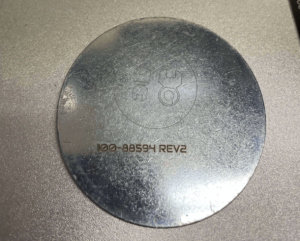Streamline Rapid Prototyping With the Right Documentation
Rapid prototyping designing and building multiple iterations of your prototype model—ideally over a short period of time. The changes in each iteration may be significant or small, but it’s critical that each file is properly named and organized to ensure the customer and their manufacturing partner are on the same page.
Neglecting crucial details in documentation complicates this process considerably. These oversights can have costly consequences, such as testing the wrong prototype model or sending the incorrect one to production.
Save yourself the headache with these tips on keeping your documentation organized during rapid prototyping.
Best Practices for Prototype Model Documentation
Include a revision number in all filenames
2D drawings and 3D models are updated frequently during rapid prototyping. If the filenames aren’t clearly labeled, it can be challenging for manufacturers to distinguish the most current version. In the worst-case scenario, they could end up working off of an outdated revision.
Manufacturers typically use filenames to search for documents, so be sure to include the latest revision numbers for both the 2D drawing and the 3D model. The goal is to make it easy for the manufacturer to find the latest revision and confirm that the 2D drawing and 3D model match.
Mark part numbers on each prototype model
It’s important to move quickly and efficiently during rapid prototyping to keep lead times short and costs manageable. You may be tempted to skip labeling your parts to speed up the process, but think twice before forgoing this critical step!
Prototype iterations can be so minor that it may be difficult to discern a modified part from the one that preceded it based on visual inspection.

We recommend including part numbers on each prototype model to avoid this confusion.
You can have the numbers machined onto your parts, but that approach isn’t always the most cost-effective choice. A better option is to leverage KAD’s in-house laser marking capabilities.
With our new OmTech 30w fiber Laser, we can perform these services to label your parts efficiently:
- Marking: discolors the material’s surface with low-heat beams
- Engraving: vaporizes the material to create precise grooves
- Etching: melts the surface and causes it to sink
- Indelible inking: adds paint to the part, almost like a permanent marker
Streamline rapid prototyping and avoid miscommunication with your manufacturer by clearly labeling all documents and parts. Request a quote for your prototype model, and be sure to specify if you want to include laser marking services!


